MADAGASCAR - EAST OF AFRICA

Words Leon Jamaer // Photos Gilles Calvet
The island nation of Madagascar, off the southeast coast of Africa, was first pioneered for windsurfing in the 90s, when French lensman, adventurer and windsurfer Gilles Calvet travelled to its remote shores and found a break that inspired a lust to return. After more than two decades, Leon Jamaer and Thomas Traversa accompanied him on a trip back to discover that the passage of time has not made the journey any easier but set against our modern world of convenience, choice and comfort, the harsh reality of life in Madagascar forges an interesting and inspiring perspective.
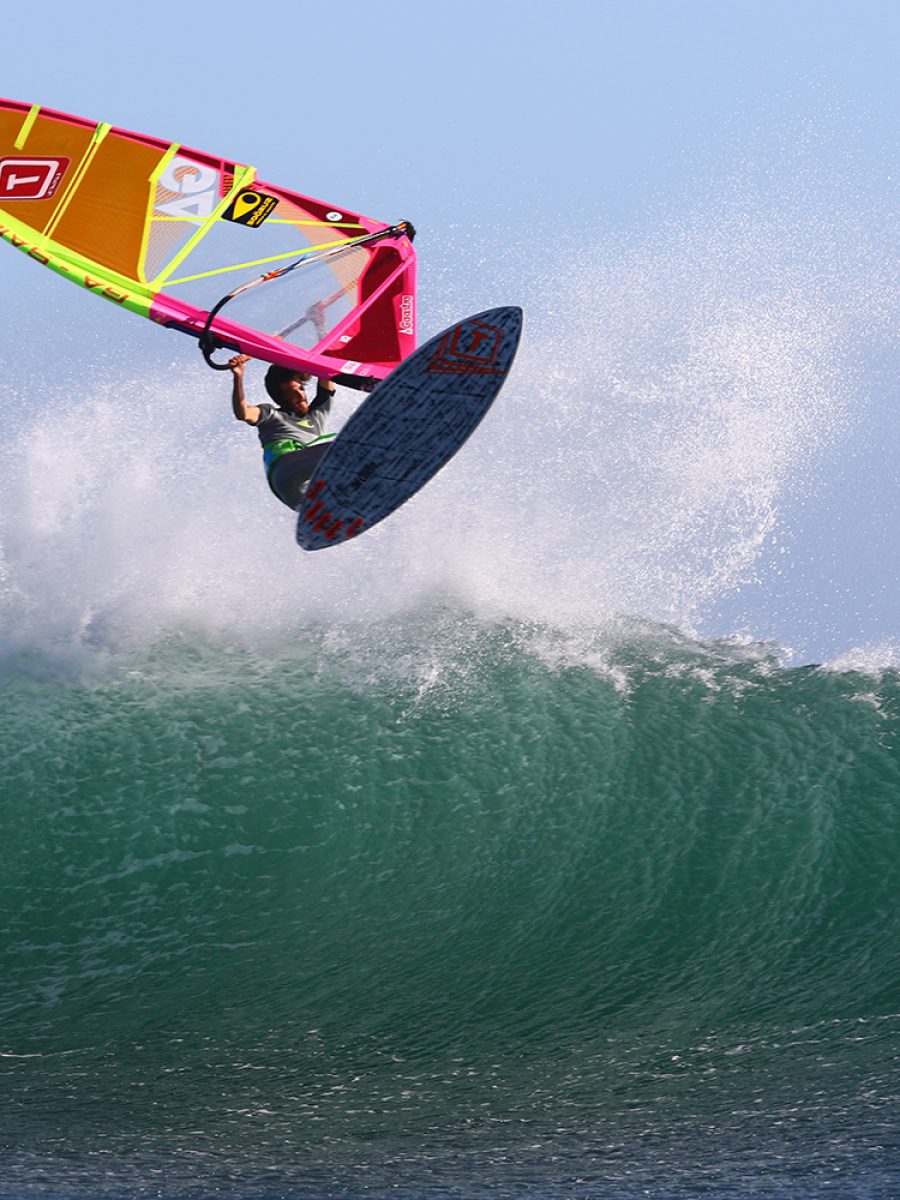
DISCOVERY
In 1992 a young Frenchman and two of his friends travel through the south of Madagascar. Decent wind and wave statistics drew their attention towards this remote territory and they were confident that this coastline must have hidden treasures. They spent a week in Fort Dauphin, surfing, windsurfing and eventually came in contact with an influential local family. At a mutual dinner they hear a fisherman talking about his home village and the wave that breaks in front of it: “All afternoon the winds blow off the tips of the waves that break in a nice order along a rock shelf.” The newly found contacts helped them to organize an expedition. A few days later the French travellers loaded two 4×4 jeeps with water, food, tents, other supplies and, naturally, windsurfing equipment. Slowly but surely they made their way southbound across the hostile territory and finally arrived in Lavanono where they hit jackpot! “We were all amazed and knew we found something special!” said Gilles Calvet. He remembers the maiden voyage as if it was yesterday, even though the journey is now a quarter of a century in the past. Nowadays, discoveries like that are rare. The globe has been scoured for wind and waves over the last decades and nearly every corner of it has been explored and scanned. From Kamchatka in the Russian Far East to West Africa and from Iceland to Patagonia – almost every beach, bay or break has been named, filmed, photographed, described in detail and later archived online. Gilles agrees, “The number of locations that windsurfers have left untouched is shrinking. Though, the bare will to find these is shrinking too. When I ask pro windsurfers to come on a photo trip with me, in nine out of ten times their first question concerns the intensity of the travel and the chances for having a windless day.”
CONUNDRUMS
I often find myself endlessly weighing pros and cons before committing to a trip. Too many possibilities and options exist: starboard tack, port tack, hotel, bungalow, offshore, onshore, big waves, smaller waves, with or without wetsuit, travel by car or plane, around the corner or far away. It is hard to stay on track in this jungle of first world problems. Once there is a smaller selection of destinations, then the intensive research of magazines and the Internet begins. Whatever the global archives exhibit will be watched, read, compared and discussed with friends who might have been there before. One knows precisely what to expect and how the trip will turn out to be before even stepping a foot out of one’s own home. Hardly anyone ventures into the unknown anymore and, instead, returns to the same known places over and over again. The time of adventurers seems to have vanished and along with it the overwhelming moment that Gilles and his friends experienced when they saw the wave of Lavanono for the first time.
I get a call from a photographer whom I met during a contest in La Reunion a few years ago. My memories of Gilles Calvet, the insurgent who prefers to sail himself instead of taking pictures, are still bright and clear. He says he is planning a trip to Madagascar to rediscover a wave that he found many years ago and asks if I would be interested to come along. By instinct, I ask about the travel and get “long and difficult” in reply. My mind starts spinning and I overhear the gnashing of teeth on the other side of the line.
ESCAPE
It was a hectic time at home to travel to the other side of the world. I had moved to a new flat and had to finalize my taxes, then deal with emails of marketing people of agencies that want me for a campaign to advertise cars. As payment they suggest the new currency, “Facebook-reach”, shorthand for will you do it for free? The bad weather hasn´t stopped for a while either. A cold has been constantly following me for a few weeks now and there is no sign of wind anytime soon – I know, the tough life of a pro windsurfer hey! Regardless, it´s time to escape.
At 30,000 feet we draw near to the equator. Thomas Traversa, next to me, is already asleep. I close my eyes and leave all negative thoughts behind. I try to grasp my excitement for this trip, which has been growing stronger and stronger in the last week, and then I fall asleep too. The next morning we arrive in Madagascar´s capital, Antananarivo, and take another plane to Fort Dauphin. From there we travel on land. From my German point of view our movements seem rather unorganized and improvised.
I am not sure if group leader Gilles doesn´t want to share his exact plans with us or whether he simply doesn´t have any. However, I am happy when we arrive at a campsite by nightfall. We are still far from our final destination and I am already overwhelmed by Madagascar. I saw people in their villages and huts, on the fields or, mostly it seemed, somewhere on the road. They travel, trade and transport goods, children play and many wave at us when we drive by. Some are smiling, some wear heavy expressions that must resemble their daily life I assume. With an average speed of 25 km/h we move south through vegetation that becomes more and more hostile, people and cattle appear thin and starved.
We cross a dry riverbed. Women dig for the last bits of water to wash their clothes. I realize my first world problems must be far away from the people here who actually have real struggles. Lavanono is a small village with a church, school, shop and lots of simple huts where a few hundred, mostly fishermen, live. The tribe is called Antandroy and gather in the main on the beach and centre their life around the sea. They seem to accept us and are happy to share the ocean. Every morning the fishermen swarm out with their tiny canoes while we play in the beautiful waves. They need the sea to feed their families whereas we use it for pure pleasure. Even though our motives are so vastly different, the people seem to like the commitment that we put into our outlandish looking activity called windsurfing. Some try to resemble us in our athletic doings, either on surfboards that were left behind, planks or whatever else was found and stays afloat. The atmosphere in Lavanono is warm and welcoming despite Madagascar´s in general difficult socio-cultural situation.
EXPLOITATION
The island of Madagascar physically separated early from Africa and that let plants and animals develop over thousands of years free from external influences. Many kinds live and blossom only here and nowhere else in the world. Madagascar’s ecology is unique. Since humans came across the island about 2000 years ago however, many species are now heavily endangered. Great parts of the tropical rainforest were slashed and burned. Nowadays, only ten per cent of its original forests are still intact with many animals extinct. In 1896 France established a colony against the influence of the Malagasy Kingdom. Until Madagascar´s independence in 1960, France´s military fought for their interests on the island. About 90.000 Malagasy died during a rebellion in 1948. The country´s politics have remained unstable with nature and its people being victim. Ninety per cent of the people live beneath the poverty line. Food and medical supplies are limited. Children work to nourish their families – around 19,000 under heavy and unhealthy conditions in Sapphire mines. Young girls prostitute themselves for money or the hope to meet a wealthy white man. Chinese and European trawlers empty the fishing grounds and tropical woods are cropped for international markets. Madagascar appears too weak to prevent exploitation.
SICKNESS
The at first so constantly blowing wind disappears and our idyllic adventure starts to lose its shine. Flea bites now cover the whole of Thomas Traversa’s body and he has spent another night on the toilet. Gilles is fighting hard to keep control over his stomach; he mostly loses. The lack of sleep must have made him paranoid. He accuses our cook, a shy little girl, of having poisoned him for the disrespectful behaviour of arriving late for dinner. “It happens all the time,” Gilles swears. A virus that is currently spreading through the villages is the more likely reason for our sickness. My symptoms are different to the others. A fever spread across my body and I can hardly walk to the house and eat. The bungalow turns more and more into a sickbay. We exchange paracetamol for charcoal, zinc for Imodium. I rely on an onion-garlic-ginger tea to get me back on track. While Thomas and Gilles are better soon, I don’t feel much change for over a week and consider flying home early. Shortly after this trip the World cup in Denmark will start and at this point I don’t see myself regaining strength. However, this would be logistically basically not possible. The closest city is 8 hours by 4×4 away. The dream trip seems to turn into a nightmare. Only a few hundred miles east is the windsurfing paradise of Mauritius with ultra constant winds, half the travel time and western standards. Why can’t I take the easy road for once and book an all-inclusive vacation?
SICKNESS
The at first so constantly blowing wind disappears and our idyllic adventure starts to lose its shine. Flea bites now cover the whole of Thomas Traversa’s body and he has spent another night on the toilet. Gilles is fighting hard to keep control over his stomach; he mostly loses. The lack of sleep must have made him paranoid. He accuses our cook, a shy little girl, of having poisoned him for the disrespectful behaviour of arriving late for dinner. “It happens all the time,” Gilles swears. A virus that is currently spreading through the villages is the more likely reason for our sickness. My symptoms are different to the others. A fever spread across my body and I can hardly walk to the house and eat. The bungalow turns more and more into a sickbay. We exchange paracetamol for charcoal, zinc for Imodium. I rely on an onion-garlic-ginger tea to get me back on track. While Thomas and Gilles are better soon, I don’t feel much change for over a week and consider flying home early. Shortly after this trip the World cup in Denmark will start and at this point I don’t see myself regaining strength. However, this would be logistically basically not possible. The closest city is 8 hours by 4×4 away. The dream trip seems to turn into a nightmare. Only a few hundred miles east is the windsurfing paradise of Mauritius with ultra constant winds, half the travel time and western standards. Why can’t I take the easy road for once and book an all-inclusive vacation?
WANDERLUST
Gilles explains his father was a seaman. When they were sailing it had been his task, as a little boy, to find bays or coves to anchor the boat. “It’s one of the reasons why I always change my focus while travelling and never take the same route – I improvise! A few years later no one will remember all the aerials I did. But one will always remember the unexpected accidents that happened along the trip. Those are the stories that my kids like to listen to,” Gilles enthuses. I ask Thomas what keeps him travelling to the most remote corners of the planet. “For me it’s something special to windsurf at a place where no one windsurfed before. Being on the water alone or with one or two good friends is pure joy. Even if the conditions don´t resemble Ho’okipa everyday. In these situations I just live for the moment. Also while travelling I will always encounter other travellers on the search that inspire me to take on new adventures!” The trip comes to an end and we prepare for the return to civilization. While the Jeep slowly progresses north, impressions of Madagascar run through my head. Without the distractions of Facebook and TV I remember the rich evening conversations about French and German differences – from the quality of bread to politics. We discussed the pros and cons of foil sailing, studied waveriding techniques or simply got lost in the stars that shine brighter than I have seen anywhere. I remember deeply red sunsets, strange animals, trees and bushes that better fit a dinosaur era. I imagine how the 3.6 metre high, now extinct, Elephant Bird had existed only 300 years ago across these lands. I remember the sailing and fishing skills of the Antandroy, the people from the South, who navigate the ocean incredibly fast and precisely. I remember the kids that carry my gear back to the camp after a session, singing and dancing.
We arrive in Fort Dauphin and check in for our flights to Paris. I notice I am full of inspiration for future trips and simply happy that I came on this trip and experienced those strange but beautiful weeks in a different world and have quickly forgotten about the bumpy road that brought me there. Special thanks to our partners for this great trip – Jean from Info Tourisme, Nico from Babaomby lodge, Gigi from Lavanono lodge and Benedicte from Beranthy lodge.
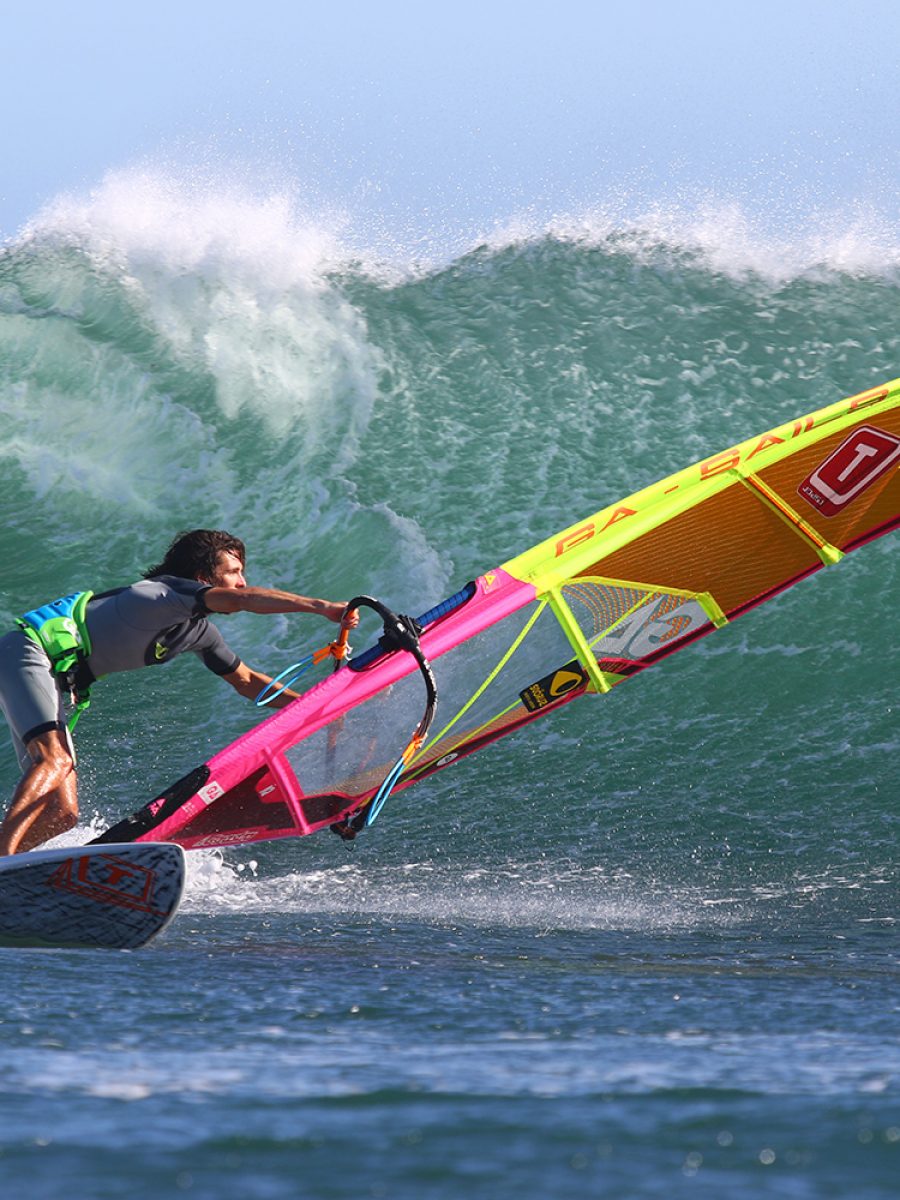
“ Every morning the fishermen swarm out with their tiny canoes while we play in the beautiful waves. ”

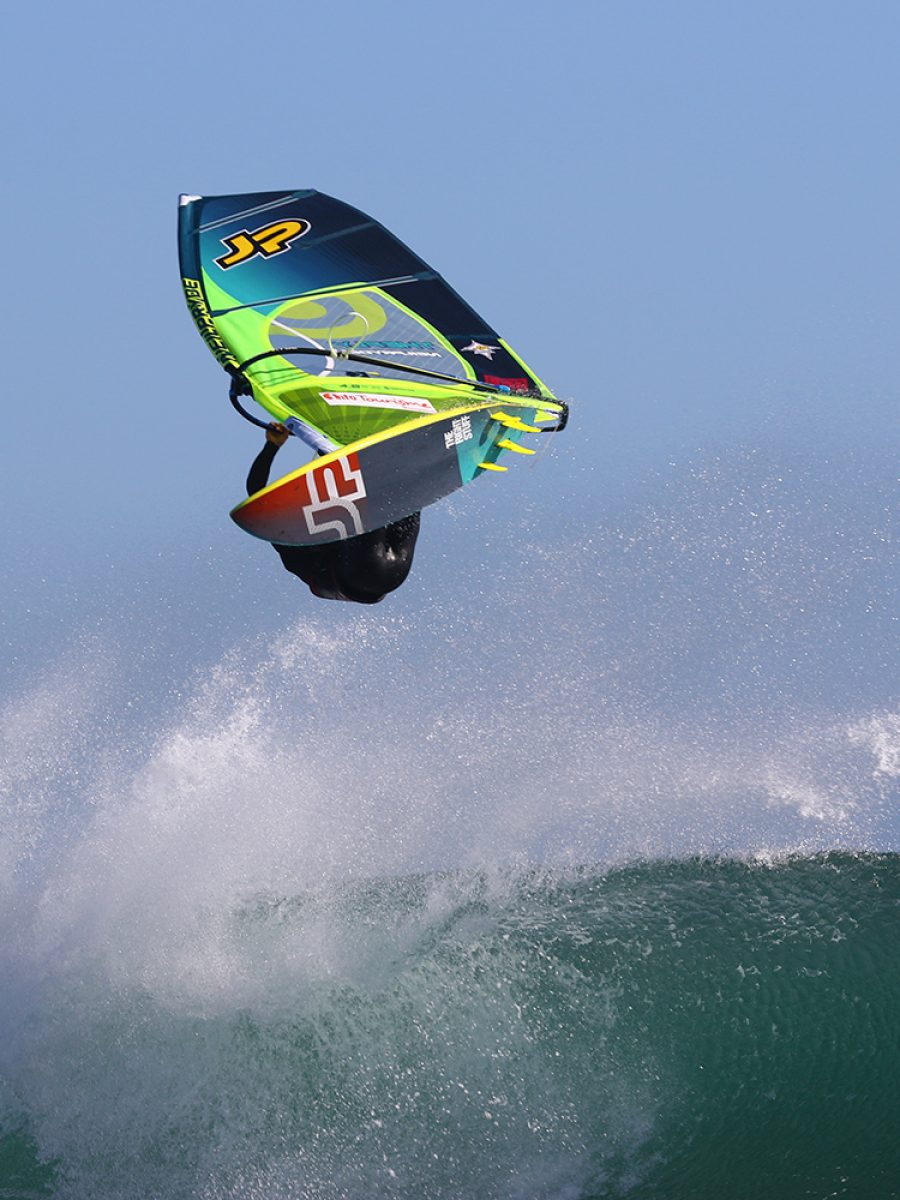
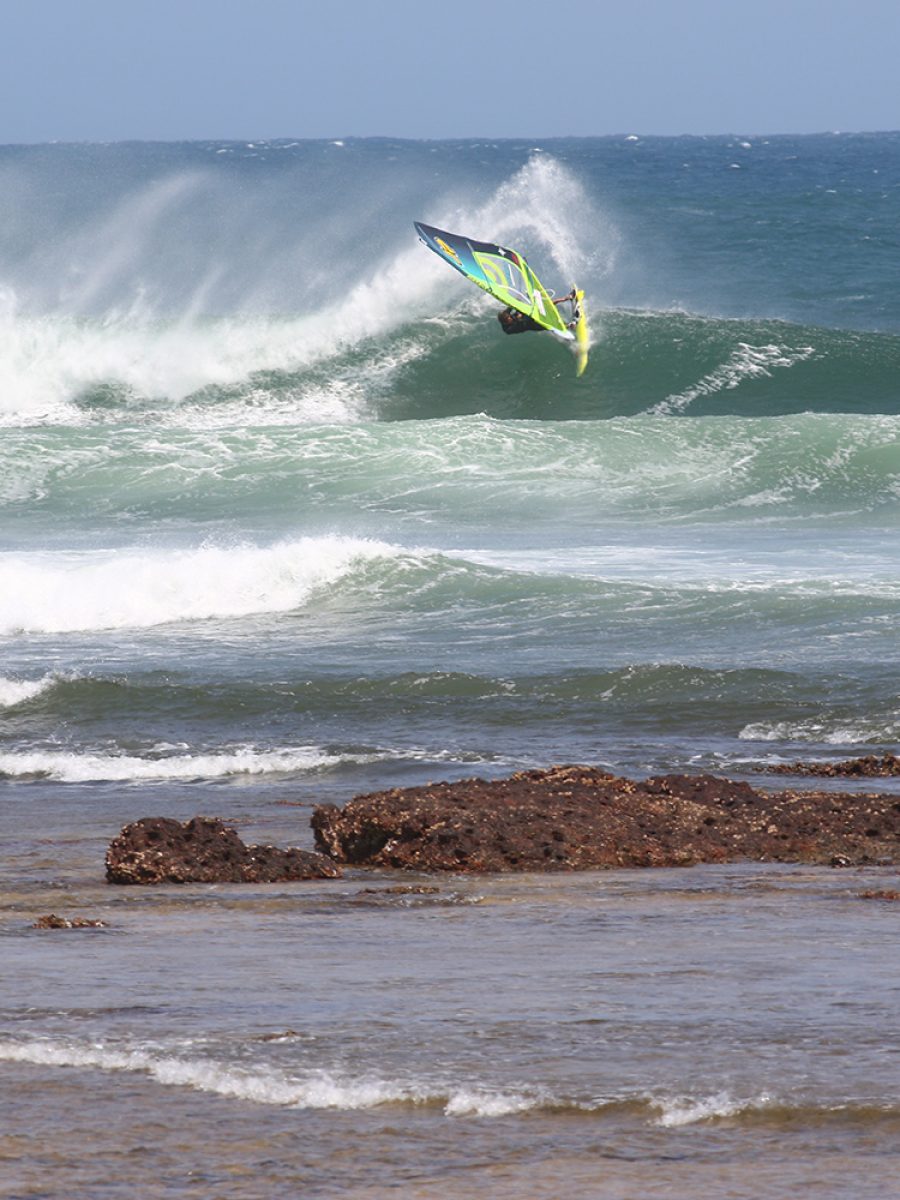
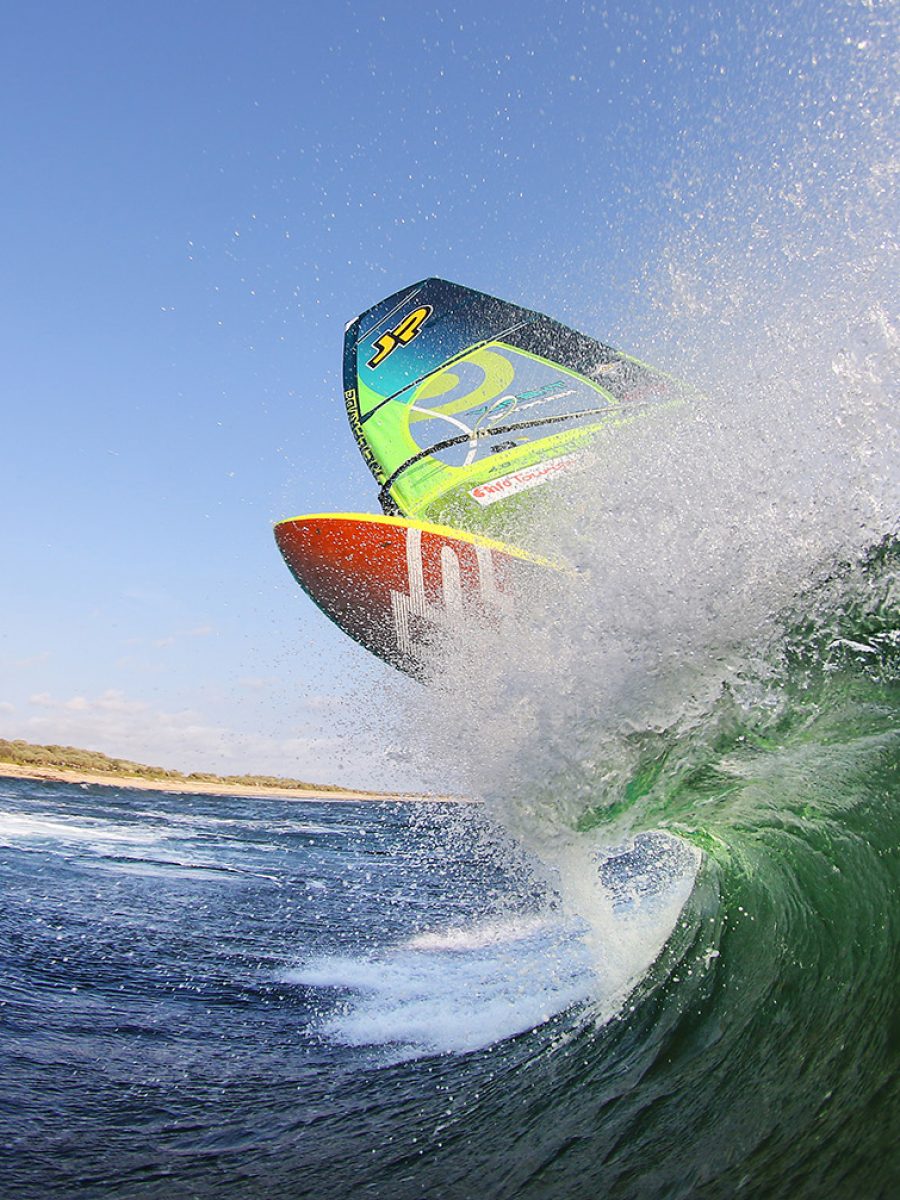
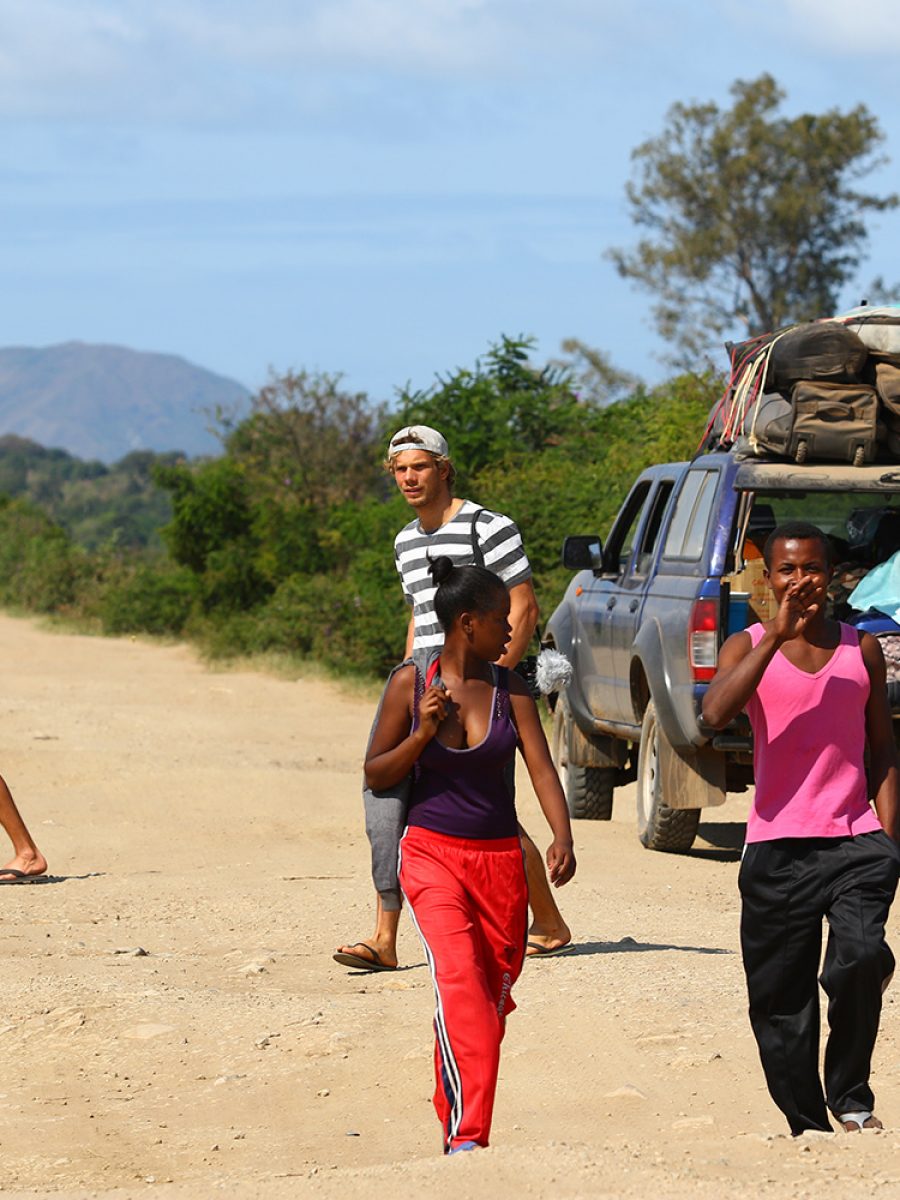
The post MADAGASCAR – EAST OF AFRICA appeared first on Windsurf Magazine.